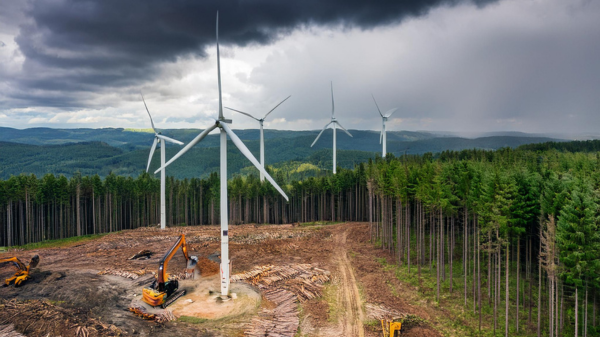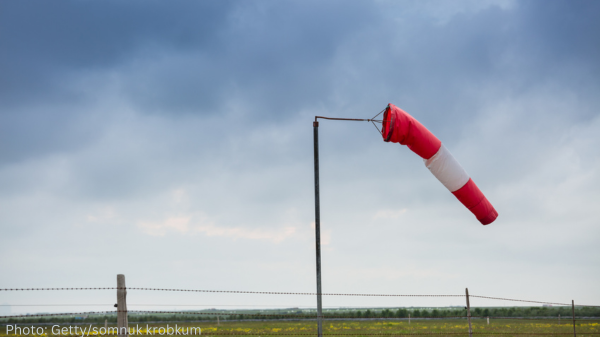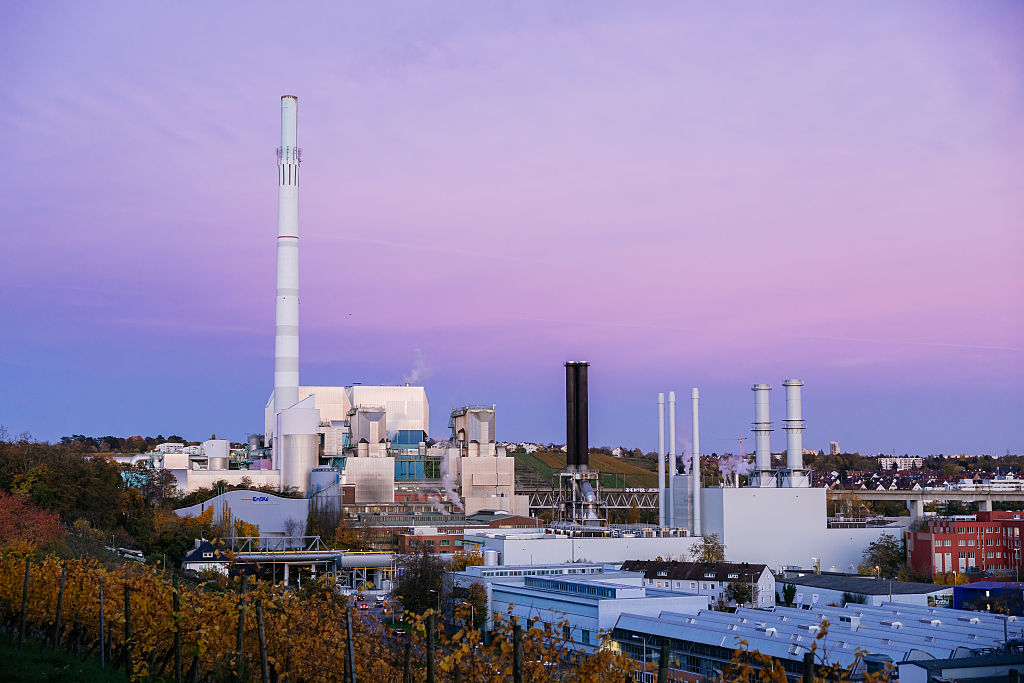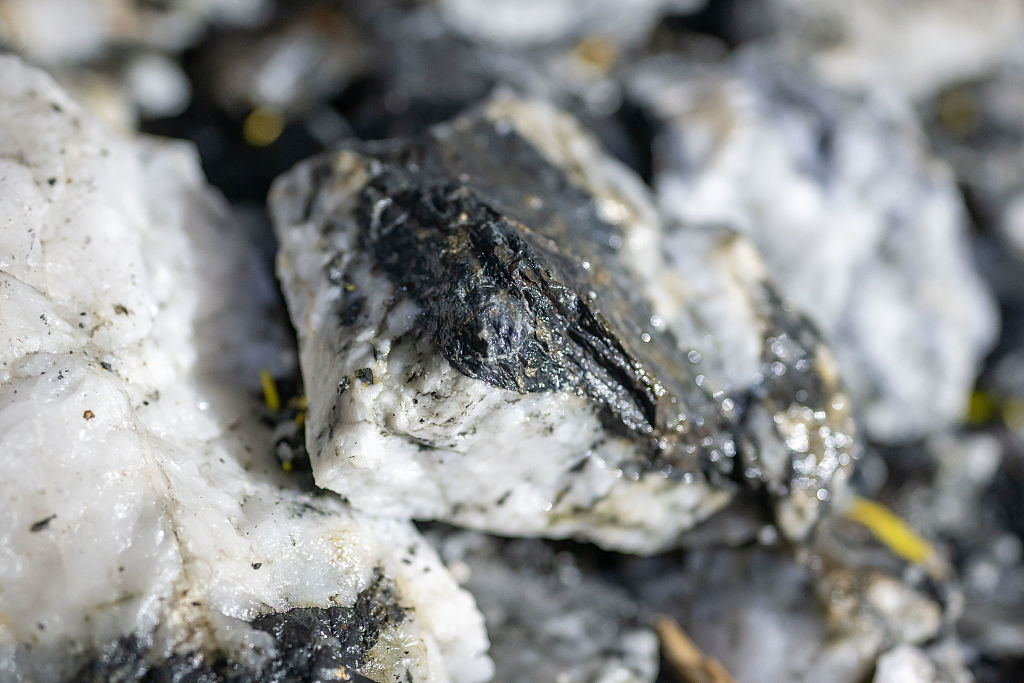IN THIS ISSUE:
- Net Zero Efforts Destroying Forests and Reefs
- Met Office Data Shows Declining Storm Strength and Wind Gusts
- Great Barrier Reef Arose and Expanded Amid Warmer Temperatures and Fast-Rising Seas
Net Zero Efforts Destroying Forests and Reefs

Many of our readers are probably aware of the tremendous amounts of lithium and cobalt needed for electric vehicle (EV) batteries, among other supposedly green technologies. Climate Change Weekly has previously discussed the environmental destruction and human rights violations inherent in the production of these elements. What many people may be unaware of is the tremendous amount of nickel needed for EVs, a fact I have not written about previously.
Conventional fossil fuel powered vehicles require and use almost no nickel, but nickel is the third-largest mineral/element critical to EV production and function.

And, it turns out, nickel mining, like cobalt and lithium mining, is undertaken largely in developing countries with minimal if any environmental rules and is causing tremendous environmental damage.
The Telegraph is reporting that …
Indonesia is now the world’s largest nickel producer, with 15 per cent of the globe’s lateritic nickel resources—typically low-grade deposits found near the surface.
But demand is still soaring in tandem with the rise of … EVs, which depend on it for their batteries. The International Energy Agency (IEA) predicts that global demand for the metal will grow at least 65 per cent by 2030, and EVs and battery storage are set to take over from stainless steel as the largest end user of nickel by 2040.
Billion dollar Chinese firms anchor the nickel market in Indonesia, but they are often fed cheap ore by hundreds of smaller, mostly locally-owned mines that dot the rainforest.
The artisanal mining and industrial smelting are producing a multi-pronged whammy for Indonesia’s rainforests, wildlife, coral reefs, and people. Forest habitat is destroyed with slash and burn activities to clear forest areas for mining, fragmenting wildlife habitat and producing air pollution and water pollution from the runoff from the mining, which befouls the streams and ultimately the bays where coral colonies exist. In the cities, smelting and refining factories set up right next to booming shanty towns are emitting toxins into the air and over the seas, and wastewater directly into the bays.
Aside from the land destruction and area conversion—forests turned into open pit mines, beaches abandoned due to pollution and mining, and fishing villages replaced by waterfront smelting facilities and factories—graphically displayed in a series of photographs accompanying The Telegraph article, the factories, set up right next to schools and homes, are emitting large amounts of sulfur dioxide, nitrogen oxides, and coal ash into the air. The water pollution from the mining runoff and wastewater dumping from the factories straight into the bays are destroying near-coastal fishing, forcing fishermen in small boats farther and farther offshore to catch diminishing numbers of fish, and the country’s coral reefs are being damaged.
Commenting on the green hypocrisy endemic to Indonesia’s nickel boom, the Daily Skeptic writes,
Of course, modern civilization is built on industry so we mustn’t be overly precious about the natural world. But such extensive mining and industrial activities connected with the drive to Net Zero gives the lie to the oft-repeated claim that battery and electric technologies are ‘green’ and ‘good for the planet’.
The intense environmental destruction also highlights the double standards of those who make a big fuss about rainforest and coral reef degradation when they think they can blame ‘greenhouse gases,’ [or agriculture, I would add] but go very quiet when ‘green’ technologies are to blame.
The Daily Sceptic is right, of course, that there is nothing wrong with development. In fact it is usually a positive, although often dirty in its earliest stages, but part of the point is, offshoring mining is required by politicians and activists in industrialized nations for technologies demanded by them to fight climate change. Which brings us to the second hypocritical double standard. Residents of developed countries won’t allow the mining and smelting to be conducted in their countries but are more than happy to see the poor in developing countries suffer from such activities—all to satisfy the mostly Western concern about climate change.
Adding green insult to net zero injury, an analysis of satellite data and photographs suggests the German government allowed electric car manufacturer Tesla to cut down an estimated 500,000 trees during the construction of its Gigafactory near Berlin.
The Daily Mail is reporting an analysis of satellite data by the environmental intelligence firm Kayrros found about “813 acres of dense woodland from the site southeast of Berlin were felled between March 2020 and May 2023—the equivalent to around 500,000 trees.”
Absent an analysis of the age and type of trees cut down, the best estimate from Kayrros chief analyst Antoine Halff is that the equivalent of 13,000 tons of annual carbon dioxide removal and storage was destroyed for the factory’s construction.
Environmentalists have protested the Tesla factory’s construction since the beginning, including repeated, fairly regular protests which have occurred since May when the factory announced it was expanding, and thus expanding its footprint on the land.
The complaint about tree removal is not the first environmental concern raised about Tesla’s Gigafactory. In fact, local water authorities warned the company it faced legal action over water pollution concerns, as a result of the fact “that the wastewater the company releases into the nearby river Spree had phosphorus and nitrogen levels six times higher than permitted.”
Even while reporting on the factory’s destruction of the trees, Halff tried to downplay the harm done, saying the electric cars the Gigafactory would help produce would have a greater impact on net carbon dioxide emissions than the lost trees. That may or may not be true, but one wonders if, in planning the factory, Tesla and German authorities couldn’t have found a less environmentally disruptive site for it, such as an abandoned industrial park or open fields. This would have avoided the necessity of felling a carbon dioxide absorbing, shade and wildlife habitat providing forest.
At Tesla’s Gigawatt factory, you don’t have to worry about not seeing the forest for the trees, because neither the forest nor the trees that made it up exist any longer.
Sources: The Telegraph; Daily Sceptic; Daily Mail
Met Office Data Shows Declining Storm Strength and Wind Gusts

Despite repeated stories being published in recent years with headlines touting windstorms hitting the United Kingdom as unusually powerful and even record-setting, the U.K. Met Office’s State of the UK Climate 2023 report paints a quite different picture.
The report finds windstorms/wind speeds were greater, with more destructive power, in past, cooler decades than in recent years. The Met Office measures storminess vis-à-vis wind speeds as the number of days each year on which 20 stations or more record gusts exceeding 40/50/60 Kt (46/58/69 mph). By this standard, the report finds:
- Overall, 2023 was comparable in storminess with other years in recent decades in terms of occurrences of max gust speeds exceeding 40/50/60 Kt.
- There have been fewer occurrences of max gust speeds exceeding 40/50/60 Kt in the last two decades compared with the 1980s and 1990s.
- The UK annual mean wind speed for 2023 was slightly below the 1991-2020 average.
- The UK annual mean wind speed from 1969 to 2023 shows a downward trend, consistent with that observed globally.
It turns out that it is not just the number of days with high wind speeds that has fallen over time. In fact, peak wind speeds have fallen on average as well (see the figures from the 2023 report, below).

Sources: Not A Lot Of People Know That; International Journal of Climatology
Great Barrier Reef Arose and Expanded Amid Warmer Temperatures and Fast-Rising Seas

Climate Realism has published a number of reports discussing the status of coral reefs in general and the Great Barrier Reef (GBR) in particular. Our reviews of the data clearly show whatever threats coral reefs face, climate change is not prominent among them. Concerning the GBR, it has set records for extent and coral colony coverage each of the past couple of years.
New research confirms that neither rising seas nor modestly warmer oceans pose a threat to the GBR’s continued existence and flourishing. Indeed, according to research published in Quaternary Science Reviews, the GBR in its current form first arose in deeper, more turbid water, and expanded during a period when sea levels were rising at a very rapid rate, much faster than now, and seas were considerably warmer.
The research shows between 8,000 and 6,000 years ago the modern iteration of the Great Barrier Reef developed on shelves in deeper water than it exists in at present, as much as ~2 meters deeper, and evolved and expanded at a time when seas were rising at rates of about 6 to 7 meters per 1,000 years, amounting to between 6 and 7 mm per year—more than 2 feet per century.
In addition, the researchers calculate ocean temperatures were approximately 4 degrees (one would presume, although it is not specified) Celsius higher than the recent average.
“It has been assumed by modern scientists (and popularized by the recent preference for alarmist narratives) that reefs could not favorably withstand these environmental conditions—nor such rapid change,” writes No Tricks Zone in reporting on the study “However, new data suggest coral reef growth was ‘substantial and active’ during this interval, which also characterizes the modern reef growth in this region.”
Indeed, the authors write that based on common beliefs about coral reefs, all the trends at the time would mitigate against coral development and be detrimental to coral colony growth. Their research indicates that is not the case. That the GBR arose as it did during a period of rapid environmental change as sea level rose, temperatures increased, and heavy runoff from wetter conditions resulted in more sediment delivered to the reef areas, shows the remarkable adaptability of coral colonies and species over time.
This confirms what Climate at a Glance: Coral Reefs previously noted: “Coral has existed continuously for the past 60 million years, surviving temperatures and carbon dioxide levels significantly higher than what is occurring today.”
Sources: No Tricks Zone; Quaternary Science Reviews



